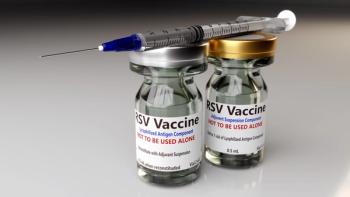
Traditional Screening May Overlook Patients at Risk of Acute Coronary Syndrome
Anna Mueller, MD, and Amir Ahmadi, MD, of Mount Sinai, highlight gaps in risk assessment tools for acute coronary syndrome, calling for more comprehensive screening strategies.
New data from a poster presentation at the
Motivation to Investigate the ASCVD Risk Assessment
When screening patients for cardiovascular disease, physicians typically look at symptoms and risk factors and assign a risk score, Mueller explained. "However, many patients who experience their first ACS event do not fit into the high-risk profile, which made us question the accuracy of these conventional methods."
In cardiology, prevention strategies rely heavily on risk factors and symptoms. "If a patient doesn't exhibit symptoms and has a low ASCVD risk score, they are often reassured and sent on their way," Ahmadi said. "But our study reveals a paradox: a significant portion of heart attacks occur in patients who were previously classified as low-risk. This disconnect suggests that we need to rethink our approach to prevention."
Key Findings Indicate Plaque May be a Determining Factor
The study evaluated the effectiveness of the ASCVD risk score and symptom-based screening in predicting ACS events by retrospectively analyzing data from 166 patients aged 65 or younger who presented with their first ACS event at a single US medical center between 2020 and 2024.
- Inadequate risk prediction: Nearly half of the patients (51%) who presented with their first ACS event were classified as low or borderline risk based on their ASCVD risk score. Of these, 64 patients (39%) had an ASCVD risk score of less than 5%, while 20 patients (12%) were considered borderline with a score of 5-7.5%.
- Absence of symptoms: More than 50% of patients did not exhibit symptoms until less than 48 hours before the event. Notably, 14 patients (8%) had no symptoms at all before their ACS event, and 98 patients (59%) experienced their first symptoms within 48 hours of the onset. Only 19 patients (11%) had symptoms for more than 3 months prior to their event.
- Failure of current screening methods: Based on the risk scores, 51% of the patients would not have been recommended for preventive statin therapy if assessed a week prior to their ACS event. Additionally, 67% of patients either had no chest pain until the event or developed it only within 48 hours, meaning they would not have been routinely screened for coronary artery disease (CAD) using anatomical or functional methods.
Implications for Patient Access to Care
These findings highlight significant gaps in the current risk assessment models for ACS. The ASCVD risk score, which is typically initiated at age 40, may not capture the full range of factors needed to accurately assess the risk, particularly in younger patients.
"Every patient with a type 1 heart attack had a plaque rupture, which starts with the formation of atherosclerosis," Ahmadi explained. "Detecting these plaques earlier, possibly through advanced imaging techniques of the coronary arteries or even other vasculatures like the carotid or abdominal aorta, could provide a more accurate assessment of risk."
The study investigators advocate for a more nuanced approach to cardiovascular disease screening, one that integrates a better understanding of atherosclerosis and uses advanced imaging techniques to detect plaques at an earlier stage. They believe that such an approach could significantly enhance the ability to prevent heart attacks in patients who do not fit the traditional high-risk profile.
"Given the high prevalence of coronary artery disease and the associated mortality, it's clear that improved screening tools are needed," Mueller said. "We need methods that go beyond just symptomatology or traditional risk scores to better identify individuals truly at risk."
While the findings are preliminary, a critical need for further research and innovation in the screening and prevention of ACS was emphasized, potentially reshaping how cardiologists assess and manage heart disease risk in the future.
Reference
Mueller A, Konje SK, Barman NB, et al. Symptoms and ASCVD score fail to identify majority of the patients at risk of first myocardial infarction. Paper presented at European Society of Cardiology Congress 2024; August 30-September 2, 2024; London, UK.
Newsletter
Stay ahead of policy, cost, and value—subscribe to AJMC for expert insights at the intersection of clinical care and health economics.














































